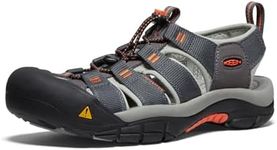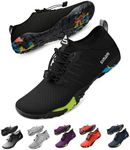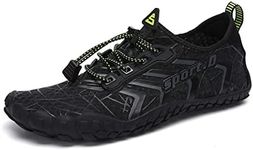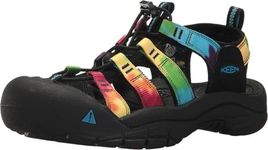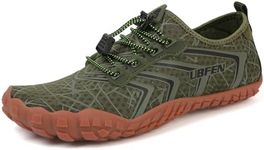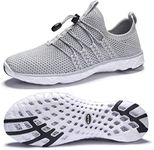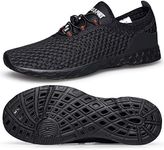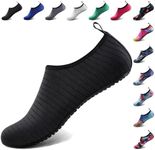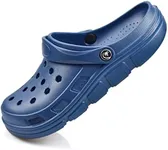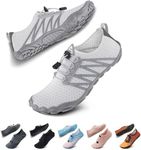Buying Guide for the Best Water Shoes
Choosing the right water shoes can make your time by the lake, river, or seaside much more comfortable and safe. Water shoes protect your feet from sharp rocks, slippery surfaces, and hot sand while allowing water to drain quickly so you don’t end up with heavy, soggy feet. The best pair for you depends on how you plan to use them, so think about your activities—casual beach walks, kayaking, river hiking, or maybe lounging by the pool. Understanding a few key features will help you pick the water shoes that suit your needs best.MaterialMaterial is all about what the shoe is made from, and it’s essential because it affects comfort, durability, and how well the shoe dries out. Common water shoe materials include mesh, neoprene, and rubber. Lightweight mesh dries quickly and lets your feet breathe, making it good for warm weather and activities like swimming. Neoprene offers a snug fit and insulation, making it better for cooler waters or longer periods in the water. Rubber is usually used for the soles, providing protection and grip. Choose lightweight mesh for easy, warm-weather activities, go for neoprene if you need warmth and a more secure fit, and always ensure the sole is sturdy rubber for safety.
DrainageDrainage refers to how well water flows out of the shoe, preventing them from becoming heavy or uncomfortable. Good water shoes will have special holes or mesh sides that let water escape quickly. Shoes with lots of drainage are perfect for water sports and activities where your feet are frequently submerged. If you'll be transitioning between water and land or expect lots of splashing, look for shoes boasting extensive drainage. If you stay dry most of the time, limited drainage is less critical.
TractionTraction is about how well the soles grip slippery or uneven surfaces, and it��’s crucial to prevent slips and falls on wet rocks, boat decks, or pool sides. Shoes with deep treads or patterns on the bottom offer the best grip. For activities like hiking on wet trails or exploring rocky beaches, prioritize strong traction, while for pool use or casual wading, moderate grip is usually enough.
Fit and ComfortFit and comfort mean how the shoes feel when worn and how securely they stay on your feet. Water shoes should fit snugly to avoid slipping off in the water, but not be so tight they cause discomfort. Adjustable straps or elastic closures help create a secure fit, especially for active use. If you’re swimming or moving through strong currents, a tight, sock-like fit works best. For general comfort on the beach or in a boat, a slightly more relaxed fit is fine.
WeightWeight refers to how heavy the shoes feel, both dry and when wet. Lighter shoes are easier to wear for swimming and activities that need a full range of motion, while heavier shoes can offer more protection but may tire your feet faster. If you want something for fast-moving sports or long walks, look for ultra-lightweight models. For tasks where foot protection and stability are more important than speed, a bit of extra weight is acceptable.
ProtectionProtection means how well the shoe shields your feet from sharp objects, stings, or abrasions. Some shoes have reinforced toes or thicker soles, which are ideal if you’re walking on rocky riverbeds or tidepools. For gentle beach or pool use, minimal protection is enough, but for rough terrains with shells, rocks, or critters, pick shoes with thicker materials and toe bumpers.
